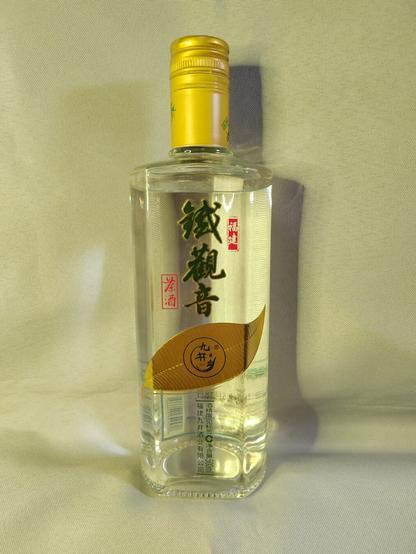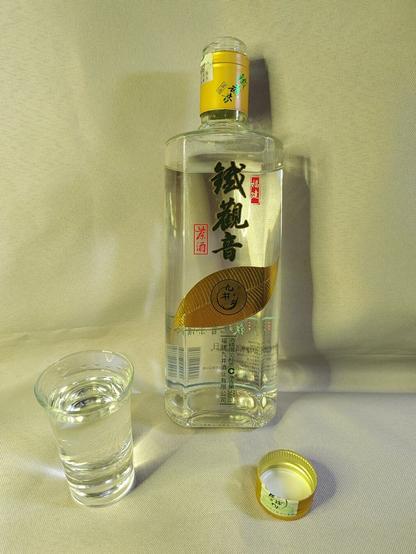Again I'm tagging @tea@a.gup.pe for content that is #Chinese #liquor. This time it has arrived and I can actually review #tea infused liquor!
First the good things:
1. I like the #bottle #design. This sounds shallow, but working where I work I know how important distinctive looks are. They've done something tasteful, but distinctive here. and didn't just use some standard bottle like so many #distilleries choose to.
2. The liquor itself is nice. At 52%/104proof, pretty much the standard grade of decent liquor in #China, the very strong base grain used (#sorghum) and the other grains used (#wheat, #rice, #corn -- mostly in the 酒麹/"jiǔqū" or just plain " qū" starter) cuts through the alcohol burn with its flavour. This is "#浓香/#nóngxiāng" or "#StrongAroma" (a.k.a. Luzhou style), so it is very sweet ... with none of the sweetness coming from sugars. This is a nice sipping liquor with a complicated attack and a quiet finish with the alcohol acting less to burn than to carry the aromatic components into your sinuses. I will definitely try it again.
But that leads us to the bad thing (and the point where my fellow tea fiends will be disappointed):
3. When I concentrate very hard I can fool myself into thinking that maybe, just maybe, I'm tasting the tea. But let's be #BrutallyHonest: if this were placed in front of me without prior knowledge and I were asked to identify all the taste components, I'd know that the base was sorghum. I'd know that the qū was multigrain. I'd get the hints of ananas and anise in the bouquet. I'd get a faint whiff of banana peel as well, as well as a hint of the sweet part of cassia. I doubt I'd ever guess that tea was used in the production. So if I think I taste the tea after intense concentration, I've fooled myself like most #sommeliers do when they recite the #nonsense lists of comparisons they use to describe wines.
So, the liquor is good, but it's not really something my fellow #TeaFreaks will have much interest in.
Client Info
Server: https://mastodon.social
Version: 2025.04
Repository: https://github.com/cyevgeniy/lmst

